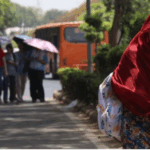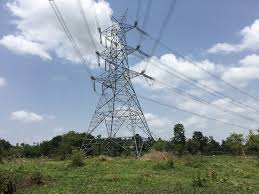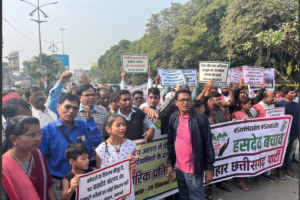Nisha Biswas
For last three years’ residents of Bhangar, mainly from the villages of Khamarait, MachhiBhanga, Tona, Gazipur etc. of Polerhat 2 Panchayet in Bhangar Assembly Constituency are protesting against forceful acquisition of 13.5 Acre of highly fertile, multi-crop land for setting up of a 2×500 MW, 440/220 KV Power Grid substation by PGCIL (Power Grid Corporation of India Ltd). Since last year, since the time PGCIL started putting up transmission towers for laying 400KV transmission lines, situation at Bhangar is highly charged. Residents are adamant that they will not let PGCIL lay the high voltage lines over their fields, bheries (fisheries), houses, schools, play grounds and brick kilns thereby fragmenting their land and polluting their environment and destroying the ecology. On 03/11/2016, 6persons including three women were arrested, while protesting against forceful installations and were imprisoned for 18days. They therefore, formed “Jomi Jibika Bastutantra O Poribesh Raksha Committee” (Committee for Protection of land-livelihood- ecology & environment) to lead the protest.On 17/01/2017, AlamgirMolla and Mafizul Khanwere shot dead. Akbar Ali Khan too had bullet injury.
Since then, local TMC leader, Arabul Islam and his armed goons practically blocked the area. People could not leave the villages for personal or professional reasons. Rampant arrest and assault was the norm. For last eight months they lived under economic blockade. Villagers and their sympathisers were implicated under false cases. Nearly 40 were arrested, each having 15 to 20 cases against them and were incarcerated for months. Many were implicated under various section of dreaded UAP Act. Whereas no action has been taken on the complaints that the residents have filed.
However, extreme repression and economic blockade failed to break the movement. With things heading towards standstill, on 31st August a meeting was held between the representative of government, led by ruling party (TMC) local leader Mr Kaiser Ahmed and Committee’s representatives of 16 villages led by its President Abdul Aziz Mallick. The main issue of discussion was to stop police atrocities and repression caused by the goons of Arabul Islam who had unconditional supportof the ruling party and restoration of peace, and to solve Power Grid issue amicably. The representatives of government agreed to stop all form of repression and to initiate talks. And that whether or not the activities of PGCIL at Bhangar is affecting its environment,it was decided that a seminar cum meeting will be held on 16th September, where each side will place its reasons and documents. Mr Kaiser Ahmed promised that if it is found that the Sub-station and 400 kV transmission lines are going to affect Bhangar’s environment and ecology the project will be shifted from Bhangar.
It is for the first time that protection of ecology and environment* has become the foremost concern of a land movement and that the government was forced to hold a Science Court before the concerned citizens of the country. Below is the statement issued by the Committee on the proceedings of the 16th meeting.
Statement of Committee for Protection of Land, Livelihood, Ecology and Environment
According to the decision taken in the meeting held on 12 September, 2017, a Seminar cum Discussion -meeting was held on 16 September, 2017 under the supervision of Police Superintendent of Baruipur District and organized by Mr Kaiser Ahmad, TMC member of ZillaParishad. In the seminar the experts from the side of PGCIL (Power Grid Corporation of India Ltd.), Committee along with 200 residents of the affected area participated. There were 11 experts from the side of PGCIL and 5 on behalf of Committee. Dr Nisha Biswas (CSIR), Dr. Tushar Chakraborty (IICB), Prof. Dr. Sanjiv Acharya (Mechanical Engineering, Jadavpur University), Priyam Basu (Student IEI) and Shankar Das on behalf of Solidarity Committee for Bhangar Movement were present. Meeting was held between from 2 pm to 5 pm.
From the beginning, the representative of PGCIL surrendered to the logic, facts and questions posed by the representatives of the Committee. On raising the question, that PGCIL itself has accepted degradation of environment by its activities, in its prospectus issued while offering sale of shares to general public in 2013 that ‘The construction and operation of our transmission and substation projects may have significant consequences on grazing, logging, agricultural activities, mining and land development as well as on the ecosystem of the affected areas. The environmental impact of a particular transmission project typically depends on the location of the project and the surrounding ecosystem’, the PGCIL representative replied that the government has forced them to write so. On raising the issue of non-compliance to International norms of laying transmission lines, there was no answer. According to IFC guidelines ‘power transmission towers and substations to avoid critical aquatic habitat (e.g. watercourses, wetlands, and riparian areas), as well as fish spawning habitat, and critical fish over-wintering habitat’.
On raising the question that where according to the Regulations made by Central Electricity Authority relating to Safety and Electricity Supply, when no school or residence within 46m and no brick kiln or other polluting unit near the installation of transmission line of 220 KV and above within a distance of 500 m is allowed, all the rules are being flouted by PGCIL and Transmission lines are being installed in water bodies, brick kilns and densely populated area, PGCIL experts could not provide any reasonable answer and were forced to acknowledge that the lines installed within the brick kilns are dangerous.
When the question that where in all the government documents the GRID project was to set-up in Rajarhat, how the project came to Bhangar, the hilarious reply on behalf of PGCIL was that the ‘Delhi Head Quarter do not know Bhangar and therefore it is named Rajarhat’. Incidentally, Rajarhat is 20Km away from Bhangar and is in different district, i.e., in North 24 Parganas. Finding impossibility in defending the project, the two experts from Presidency University and Shibpur BE College, quietly slipped away. When questions were raised on ROW (Right of Way), it took almost half an hour for the PGCIL experts to understand what is meant by ROW. And why the transmission lines are so laid that primary school, habitats, water bodies and brick kilns fall within the ROW, no answer or reason could be provided by them.
Upon raising the environmental issue, the Power Grid experts turned to ICNIRP’s ‘SAFE LIMIT’. On reminding them that at an international EMF conference in London (2008), Professor Paolo Vecchia, ICNIRP Chairman from2004 to 2012, said about the exposure guidelines ”What they are not”: “They are not mandatory prescriptions for safety”,”They are not the’ ‘last word’ on the issue”, and “They are not defensive walls for industry or others”, the Power Grid experts compared themselves with a reluctant kid who refuse to listen parents.
The embarrassed TMC leader then concluding the meeting promising that, ”there will be another meeting on these issues and experts who are well conversed with the matter will participate. They will come with much better preparation”.
Though various newspapers today reported that TMC leader Kaiser Ahmed claimed that the villagers have well understood that the sub-station and HV transmission lines do not pose any health risk, but his disappointment with the experts was well expressed.
In short, the outcome of yesterday’s seminar is that PGCIL has not followed any of the rules or laws of the land, to the extent it flouted mandatory IFC’s guidelines. The high possibility of damages due to electromagnetic radiation was also obvious and established the rightfulness of the demand of its people and the bankruptcy in the reasoning provided by PGCIL experts was so clear.


















